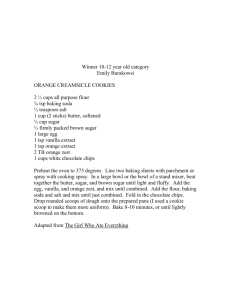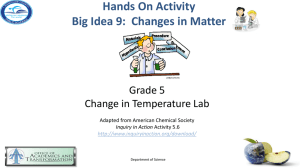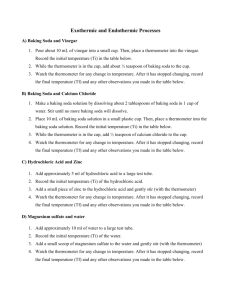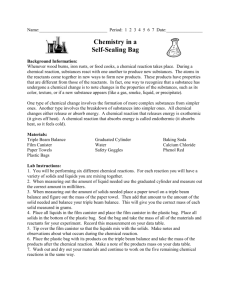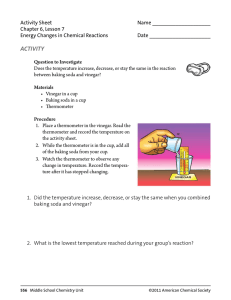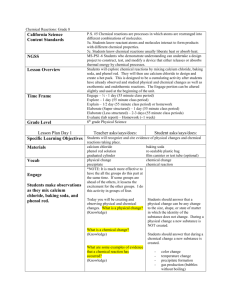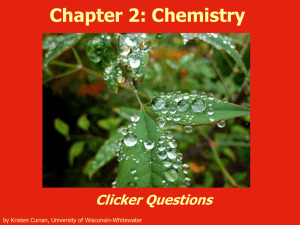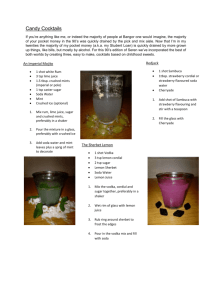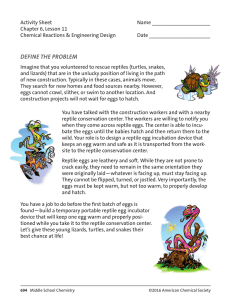Change in Temperature Lab Student
advertisement
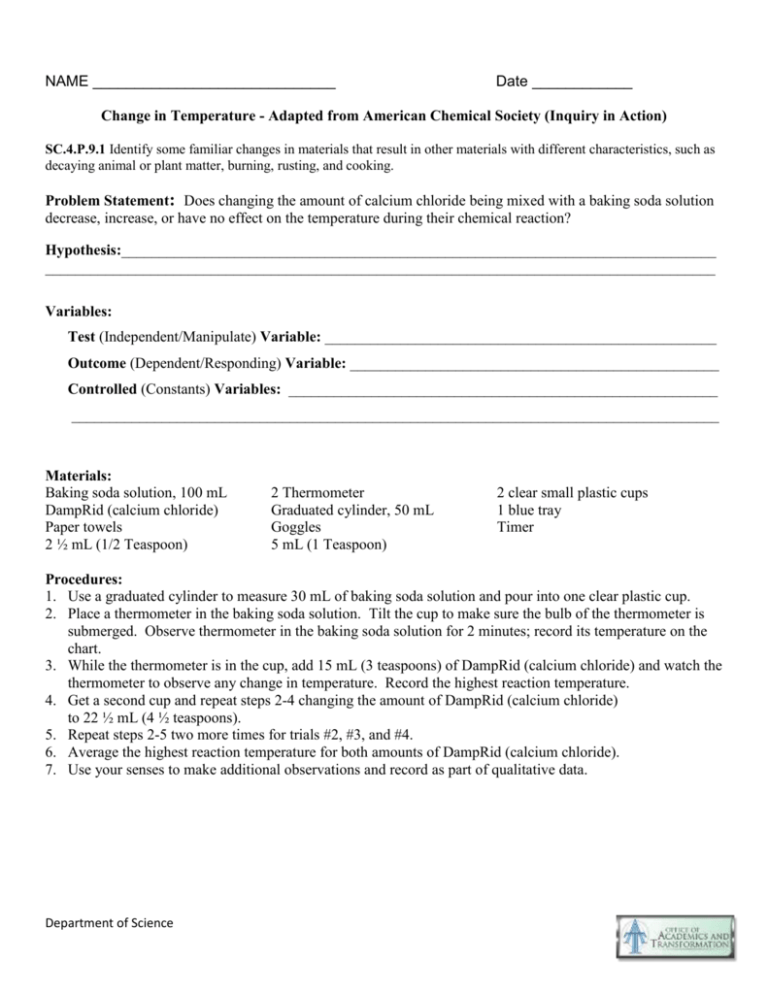
NAME _____________________________ Date ____________ Change in Temperature - Adapted from American Chemical Society (Inquiry in Action) SC.4.P.9.1 Identify some familiar changes in materials that result in other materials with different characteristics, such as decaying animal or plant matter, burning, rusting, and cooking. Problem Statement: Does changing the amount of calcium chloride being mixed with a baking soda solution decrease, increase, or have no effect on the temperature during their chemical reaction? Hypothesis:_______________________________________________________________________________ _________________________________________________________________________________________ Variables: Test (Independent/Manipulate) Variable: ____________________________________________________ Outcome (Dependent/Responding) Variable: _________________________________________________ Controlled (Constants) Variables: _________________________________________________________ ______________________________________________________________________________________ Materials: Baking soda solution, 100 mL DampRid (calcium chloride) Paper towels 2 ½ mL (1/2 Teaspoon) 2 Thermometer Graduated cylinder, 50 mL Goggles 5 mL (1 Teaspoon) 2 clear small plastic cups 1 blue tray Timer Procedures: 1. Use a graduated cylinder to measure 30 mL of baking soda solution and pour into one clear plastic cup. 2. Place a thermometer in the baking soda solution. Tilt the cup to make sure the bulb of the thermometer is submerged. Observe thermometer in the baking soda solution for 2 minutes; record its temperature on the chart. 3. While the thermometer is in the cup, add 15 mL (3 teaspoons) of DampRid (calcium chloride) and watch the thermometer to observe any change in temperature. Record the highest reaction temperature. 4. Get a second cup and repeat steps 2-4 changing the amount of DampRid (calcium chloride) to 22 ½ mL (4 ½ teaspoons). 5. Repeat steps 2-5 two more times for trials #2, #3, and #4. 6. Average the highest reaction temperature for both amounts of DampRid (calcium chloride). 7. Use your senses to make additional observations and record as part of qualitative data. Department of Science NAME _____________________________ Date ____________ DATA TABLE Trial #1 Baking soda solution temperature (°C) Amount of DampRid (Calcium chloride) in Teaspoon 3 tsp 4½ tsp Trial #2 3 tsp 4½ tsp Trial #3 3 tsp 4½ tsp Trial #4 3 tsp 4½ Average 3 tsp tsp 4½ tsp Highest reaction temperature (°C) DATA: QUALITATIVE (USING YOUR SENSES) OBSERVATIONS ________________________________________________________________________________ ________________________________________________________________________________ ________________________________________________________________________________ ________________________________________________________________________________ ________________________________________________________________________________ ________________________________________________________________________________ ________________________________________________________________________________ ________________________________________________________________________________ Department of Science NAME _____________________________ Date ____________ Conclusion: Answer the following questions to complete the Conclusion: 1. What was investigated? (State the purpose of the experiment by describing the problem statement.) ________________________________________________________________________________ ________________________________________________________________________________ ________________________________________________________________________________ 2. Was your hypothesis supported by the data? (Write a statement as to whether the data supports or does not support the hypothesis including a restatement of the hypothesis.) ________________________________________________________________________________ ________________________________________________________________________________ ________________________________________________________________________________ 3. What were the major findings? (Describe the data collected that provides the evidence as to why the hypothesis was supported or not supported.) ________________________________________________________________________________ ________________________________________________________________________________ ________________________________________________________________________________ ________________________________________________________________________________ Application/Extension: Answer the following questions to complete the Application: 1. How can the investigation be improved? ________________________________________________________________________________ ________________________________________________________________________________ ________________________________________________________________________________ 2. What are some possible applications of the experiment? (Describe how the findings from this investigation can be used in day-to-day life.) ________________________________________________________________________________ ________________________________________________________________________________ ________________________________________________________________________________ 3. What question(s) has your experiment lead you to ask that could be tested in a new investigation? ________________________________________________________________________________ ________________________________________________________________________________ Department of Science NAME _____________________________ Date ____________ Claim Evidence Reasoning – CER – Conclusion Writing Question: Does changing the amount of calcium chloride being mixed with a baking soda solution, increase, decrease, or have no effect on the temperature during the chemical reaction? Claim: (The answer to the question.) ________________________________________________________________________________ ________________________________________________________________________________ ________________________________________________________________________________ Evidence: (All the evidence you gathered from hands-on investigations. This includes the observations made and the data collected.) ________________________________________________________________________________ ________________________________________________________________________________ ________________________________________________________________________________ ________________________________________________________________________________ ________________________________________________________________________________ Reasoning: (Why you think the answer is correct. The reasoning explains how the evidence helps answer the question.) ________________________________________________________________________________ ________________________________________________________________________________ ________________________________________________________________________________ ________________________________________________________________________________ ________________________________________________________________________________ ________________________________________________________________________________ ________________________________________________________________________________ ________________________________________________________________________________ ________________________________________________________________________________ Department of Science
